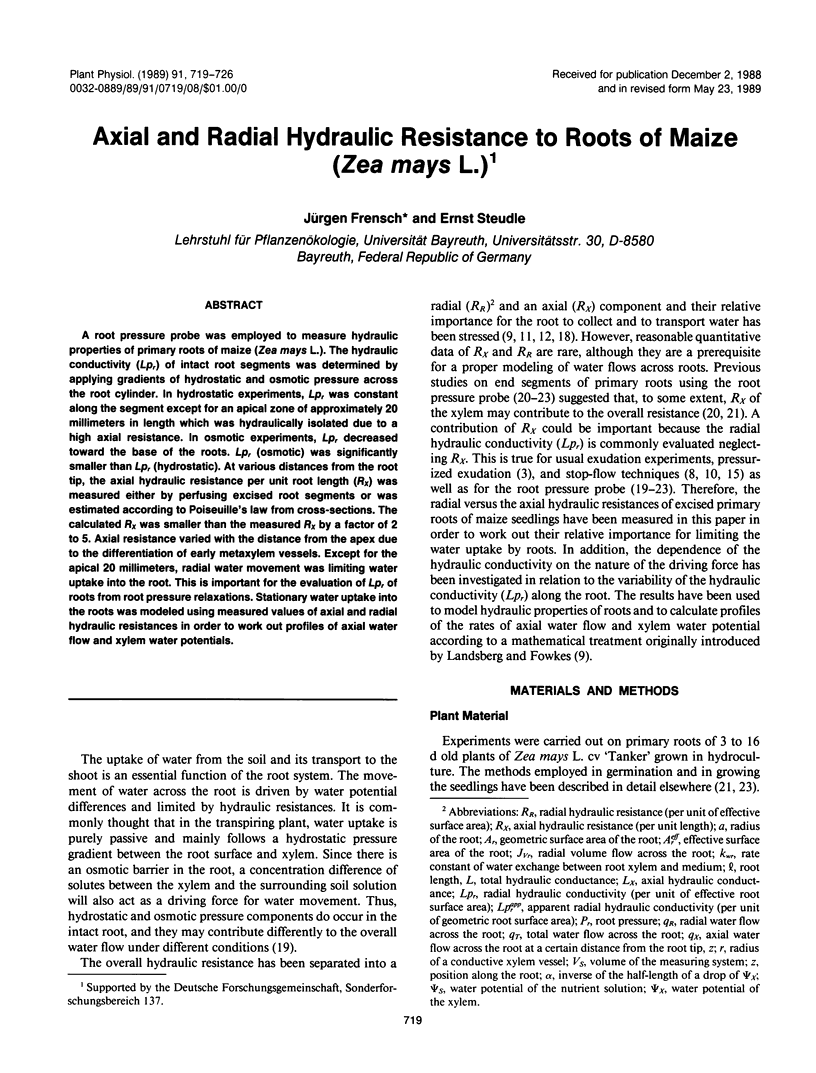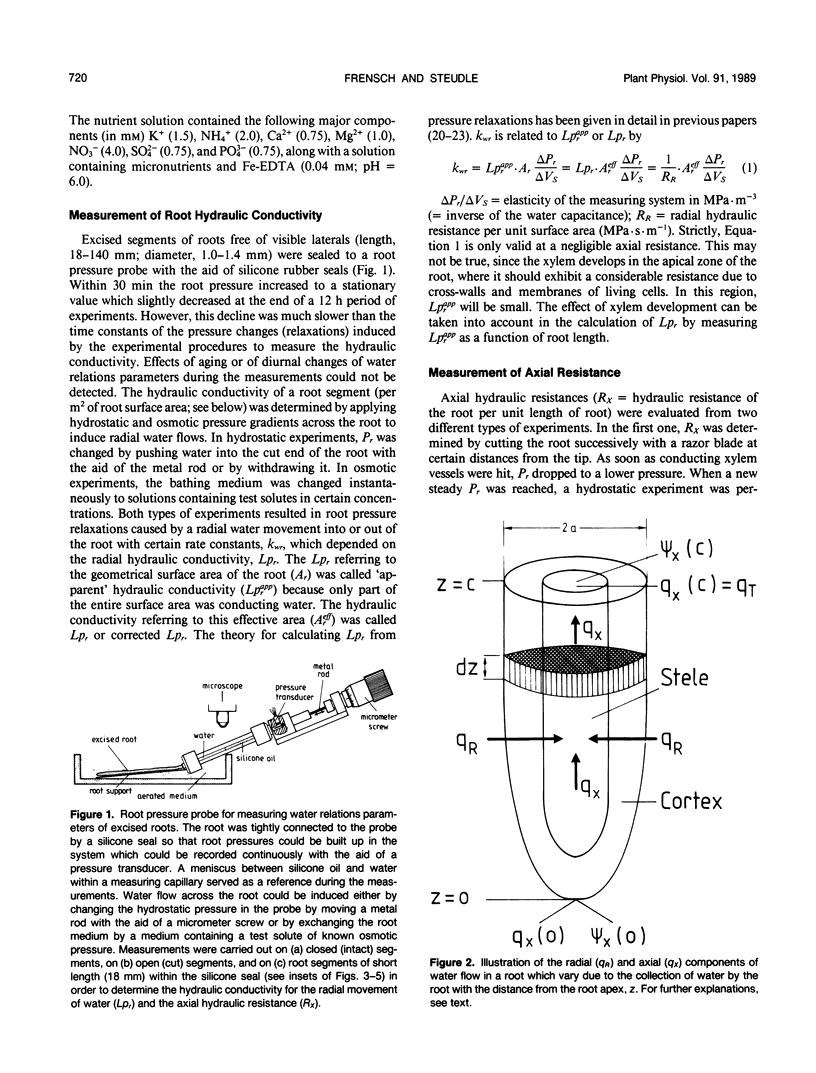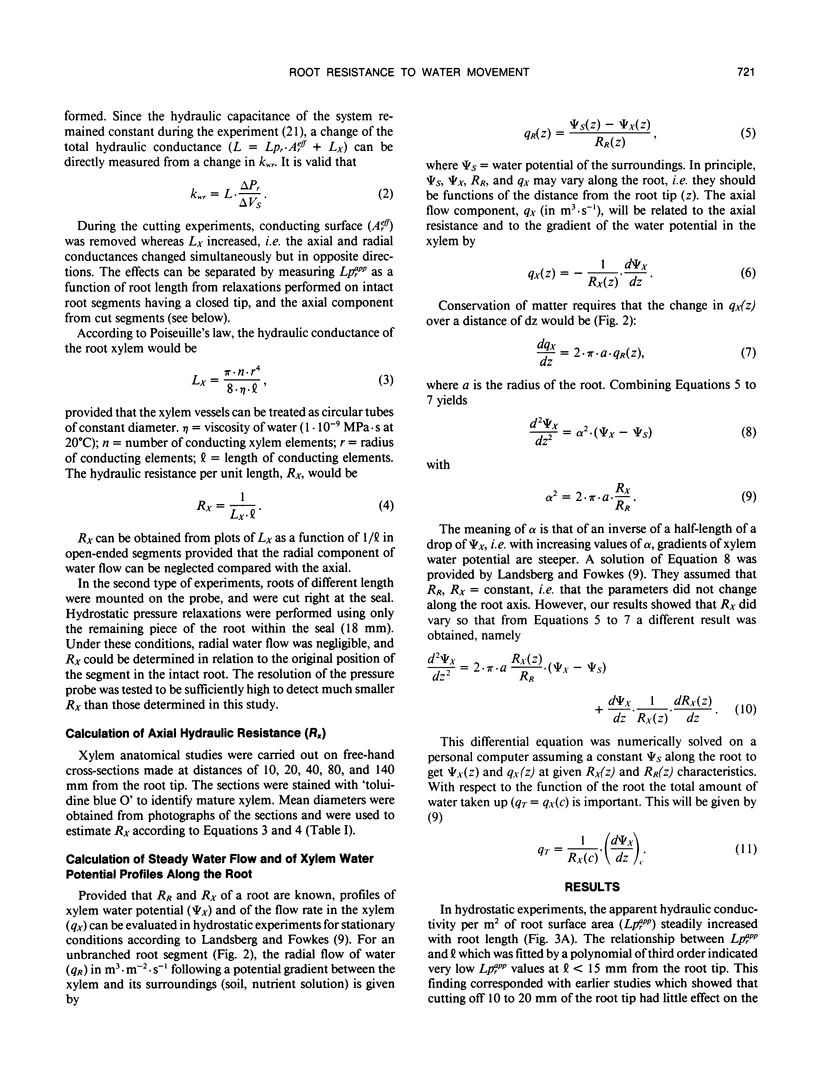Abstract
A root pressure probe was employed to measure hydraulic properties of primary roots of maize (Zea mays L.). The hydraulic conductivity (Lpr) of intact root segments was determined by applying gradients of hydrostatic and osmotic pressure across the root cylinder. In hydrostatic experiments, Lpr was constant along the segment except for an apical zone of approximately 20 millimeters in length which was hydraulically isolated due to a high axial resistance. In osmotic experiments, Lpr decreased toward the base of the roots. Lpr (osmotic) was significantly smaller than Lpr (hydrostatic). At various distances from the root tip, the axial hydraulic resistance per unit root length (Rx) was measured either by perfusing excised root segments or was estimated according to Poiseuille's law from cross-sections. The calculated Rx was smaller than the measured Rx by a factor of 2 to 5. Axial resistance varied with the distance from the apex due to the differentiation of early metaxylem vessels. Except for the apical 20 millimeters, radial water movement was limiting water uptake into the root. This is important for the evaluation of Lpr of roots from root pressure relaxations. Stationary water uptake into the roots was modeled using measured values of axial and radial hydraulic resistances in order to work out profiles of axial water flow and xylem water potentials.
Full text
PDF







Selected References
These references are in PubMed. This may not be the complete list of references from this article.
- Anderson W. P., Higinbotham N. Electrical resistances of corn root segments. Plant Physiol. 1976 Feb;57(2):137–141. doi: 10.1104/pp.57.2.137. [DOI] [PMC free article] [PubMed] [Google Scholar]
- Fiscus E. L. The Interaction between Osmotic- and Pressure-induced Water Flow in Plant Roots. Plant Physiol. 1975 May;55(5):917–922. doi: 10.1104/pp.55.5.917. [DOI] [PMC free article] [PubMed] [Google Scholar]
- Miller D. M. Studies of Root Function in Zea mays: IV. Effects of Applied Pressure on the Hydraulic Conductivity and Volume Flow through the Excised Root. Plant Physiol. 1985 Jan;77(1):168–174. doi: 10.1104/pp.77.1.168. [DOI] [PMC free article] [PubMed] [Google Scholar]
- Radin J. W., Matthews M. A. Water transport properties of cortical cells in roots of nitrogen- and phosphorus-deficient cotton seedlings. Plant Physiol. 1989 Jan;89(1):264–268. doi: 10.1104/pp.89.1.264. [DOI] [PMC free article] [PubMed] [Google Scholar]
- Steudle E., Oren R., Schulze E. D. Water transport in maize roots : measurement of hydraulic conductivity, solute permeability, and of reflection coefficients of excised roots using the root pressure probe. Plant Physiol. 1987 Aug;84(4):1220–1232. doi: 10.1104/pp.84.4.1220. [DOI] [PMC free article] [PubMed] [Google Scholar]


